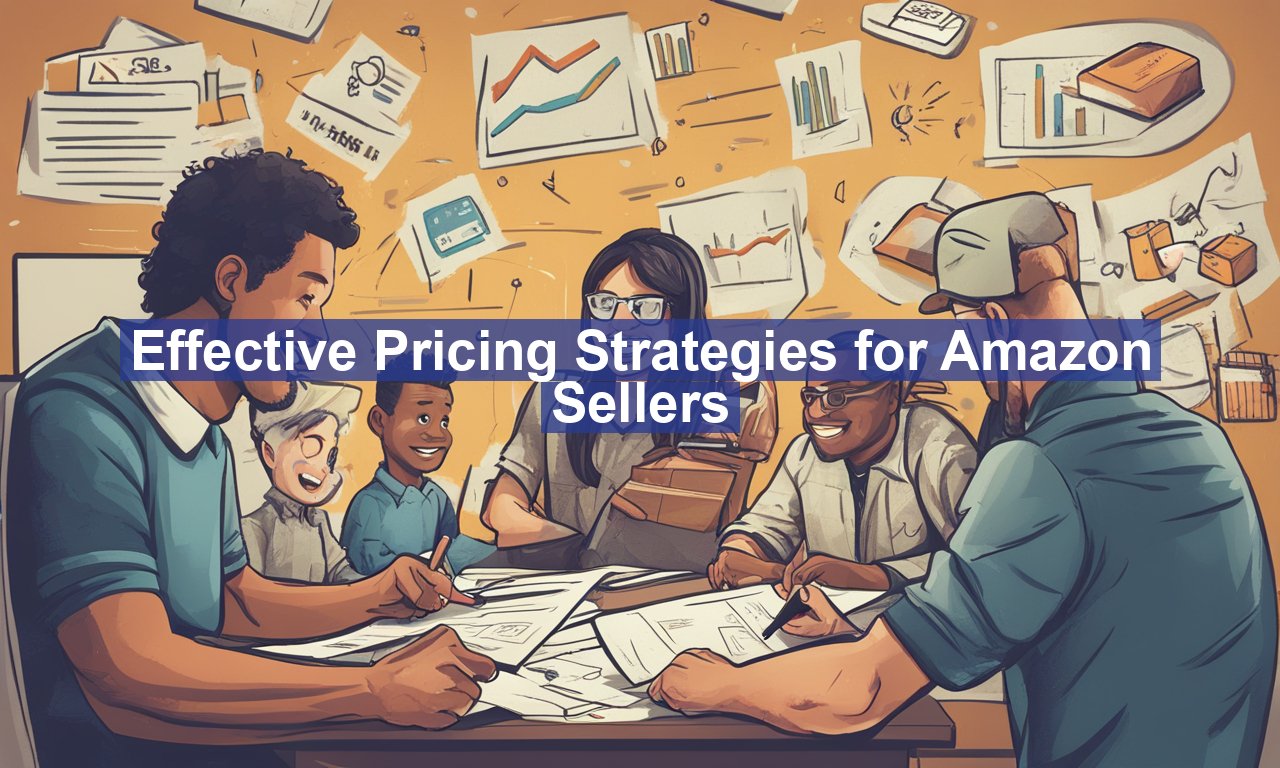Effective pricing strategies for Amazon sellers, are you an Amazon seller striving to find the sweet spot for your product pricing? The quest for the perfect pricing strategy can seem daunting, but mastering this art could be the stepping stone to skyrocketing sales and enhanced profitability. In this article, we’ll delve into effective pricing strategies that can help you excel on Amazon, ensuring your products are both competitive and profitable. From dynamic pricing to understanding customer psychology, we’ve got you covered to enhance your e-commerce game plan.
Effective Pricing Strategies for Amazon Sellers Step-by-Step Guide
Understanding Market Competition
Navigating the competitive landscape of Amazon requires a keen understanding of the market. Sellers must consider competitors’ pricing, given that customers often compare similar products:
- Competitive Intelligence: Use tools like Jungle Scout and Helium 10 to monitor competitor pricing strategies.
- Price Matching: Consider adjusting your prices to remain competitive, but don’t compromise on quality or margin.
Staying aware of trends in your niche can provide valuable insights. For more information on competitive analysis, check out this guide to competitor analysis.
Leveraging Dynamic Pricing
Dynamic pricing is a popular strategy among Amazon sellers, as it helps maximize profits by aligning product prices with real-time demand and competition:
- Automated Tools: Tools like Repricer Express and Seller Snap can adjust prices automatically based on predefined criteria.
- Adjust for Peak Times: Increase prices during high-demand periods such as holidays or events, and lower them off-season to maintain steady sales.
Dynamic pricing can create a balanced approach to maintaining profit margins while staying competitive. However, be mindful to ensure your prices remain attractive to consumers.
Understanding Customer Psychology
Customer psychology plays a crucial role in pricing strategies. Understanding how customers perceive value and price can significantly impact their purchase decisions:
- Charm Pricing: Prices ending in ‘.99’ or ‘.95’ can make products appear cheaper and more appealing.
- Perceived Value: Offering comprehensive product descriptions and high-quality images can enhance perceived value, justifying slightly higher prices.
An insightful article on the psychology behind pricing can offer deeper insights into how to leverage consumer behavior to your advantage.
Incorporating Value-Based Pricing
Value-based pricing centers around determining how much your target customers are willing to pay for the intrinsic value that they perceive in your products:
- Customer Feedback: Engage with your customers and study reviews to understand perceived value.
- Unique Selling Proposition: Position your offering distinctly based on unique features or benefits.
This approach positions your product based on consumer preference and value perception rather than competitor prices. For more details, explore this detailed analysis on value-based pricing strategies.
Implementing Loss Leader Strategies
The loss leader strategy involves selling a product at a low price, sometimes at a loss, to attract customers. This strategy can lead to increased sales of more profitable products:
- Targeted Promotions: Highlight complementary products that can drive higher-volume sales.
- Bundled Offers: Create product bundles to increase the average cart value.
Using a loss leader strategy can introduce new customers to your brand, setting the stage for future sales. Be cautious, however, to limit potential losses.
Evaluating Cost-Plus Pricing
Cost-plus pricing is a straightforward strategy where a fixed percentage is added to the production cost to determine the selling price:
- Break-Even Analysis: Calculate the break-even point to ensure all costs are covered before profits.
- Consistent Markup: Apply a consistent markup across similar product categories to streamline pricing processes.
This approach simplifies pricing but should be balanced against competitive and market conditions to avoid pricing yourself out of the market.
Regular Pricing Reviews and Adjustments
Amazon’s dynamic marketplace demands that sellers frequently revisit their pricing strategies:
- Data Analysis: Use Amazon analytics and feedback to assess pricing performance and sales data.
- Testing New Strategies: Implement small changes and analyze impacts to find optimal pricing tactics.
Regular evaluations ensure your prices remain competitive and aligned with market expectations, enhancing the potential for growth and profitability.
In the fast-paced world of Amazon, adopting the right pricing strategy is essential for staying ahead. By implementing these effective strategies and continuously refining your approach, you’ll be well-equipped to attract customers while maximizing your profits. Embrace the power of informed pricing and let your sales soar!
Whether through engaging with customer psychology or leveraging innovative pricing tools, becoming adept in pricing strategies can enhance your Amazon journey immensely. Remember, pricing isn’t just about numbers; it’s about understanding your customers, your market, and ultimately crafting an irresistible value proposition.


